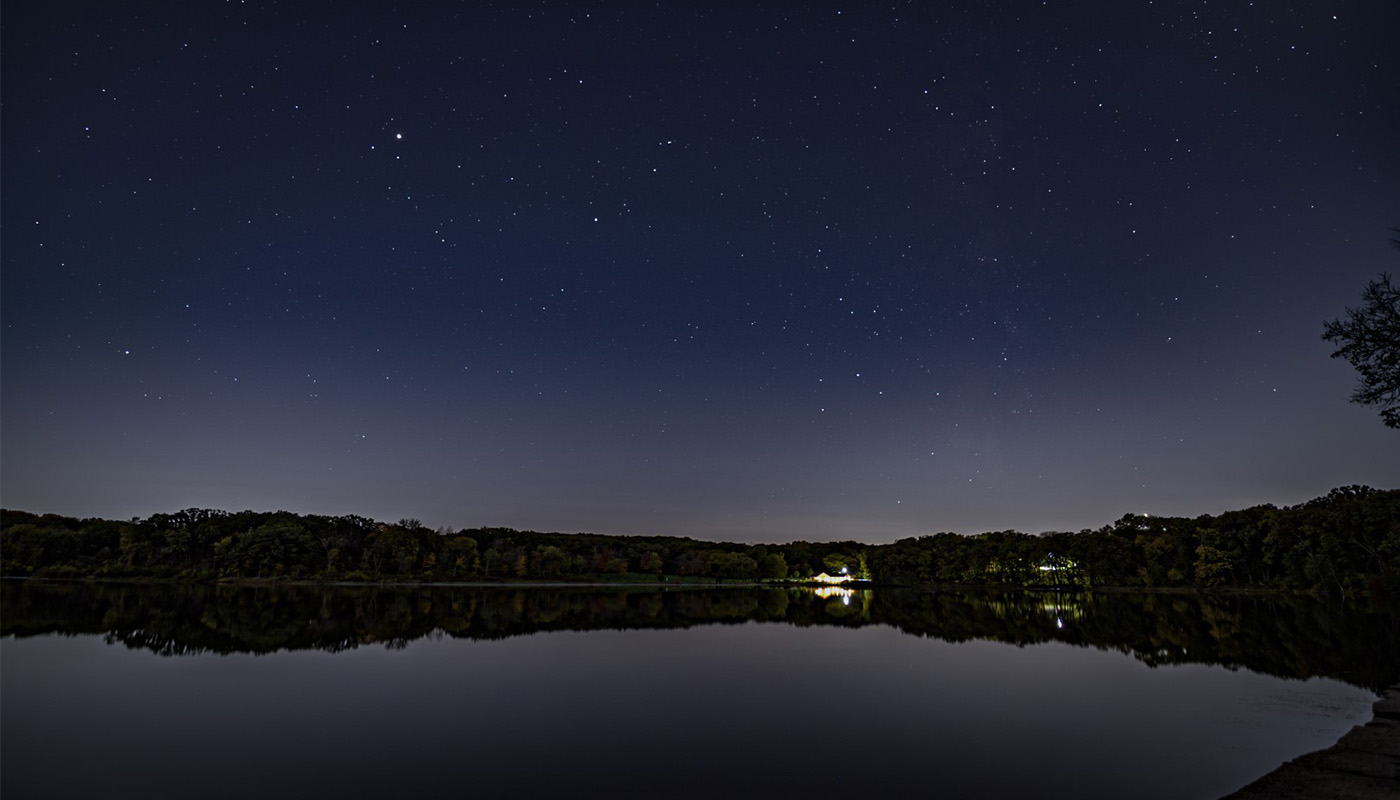From the thousands of stars visible on a dark night to the arc of nebulous light rising across the Milky Way, the night sky is inspiring. But light pollution produced by humans, especially in dense urban areas like Cook County, threatens our ability to experience the wonder and beauty of a truly dark night sky. The Forest Preserves is working with partner organizations to ensure that our special landscapes and skies are there for future generations to enjoy.
On this page:
Dark Skies Friendly Policy
The Forest Preserves’ Dark Skies Friendly Policy outlines steps we are taking to preserve and restore our dark night skies. This policy helps the Forest Preserves reduce energy consumption and costs, while benefiting wildlife and human health through reductions in artificial light.
As part of the policy, the Forest Preserves created a lighting transition plan that ensures our indoor and outdoor lighting fixtures meet standards established by the International Dark-Sky Association. We are also partnering with organizations like Adler Planetarium to secure Urban Night Sky Place designations for sites that meet that program’s criteria.
Palos Preserves Urban Night Sky Place
In 2021, the International Dark-Sky Association designated the Palos Preserves in southwest Cook County as an Urban Night Sky Place—a location near large urban areas whose planning and design actively promote an authentic nighttime experience in the midst of significant artificial light. The site is the largest Urban Night Sky Place in the world.
About four times more stars are visible in the night sky over the Palos Preserves than in the City of Chicago as measured by Adler Planetarium, which partnered with the Forest Preserves to pursue the Urban Night Sky Place designation. The Palos Preserves, historically known as Mt. Forest Island, is part of the largest area of protected natural land in Cook County. The Urban Night Sky Place houses only four buildings in its 6,662 acres, and satellite radiance data show that the region emits nearly 1,000 times less light than downtown Chicago.
To measure and document the light levels in the Palos Preserves, the Adler Planetarium worked with their teen interns to use specially designed cameras, built by students and volunteers at the Adler, across Chicago and in the Forest Preserves to quantify the nighttime sky in the region. The students also used satellite data and images from astronauts on board the International Space Station for the application.
Working with the Adler Planetarium, the Forest Preserves created a light management plan as part of the Urban Night Sky Place application for the Palos Preserves. With a combination of timers, shielded fixtures and night sky friendly LED lighting, we further reduced the limited amount of artificial light in the area’s buildings and parking lots while maintaining safety and visibility.
Locations in the Palos Preserves close by sunset, so visitors who want to enjoy the night at this Urban Night Sky Place should keep an eye out for astronomy programs or book a night of camping at Camp Bullfrog Lake. Daytime visitors can still enjoy the vast areas of uninterrupted woodlands, prairies, savannas and wetlands from the extensive Palos Trail System.

